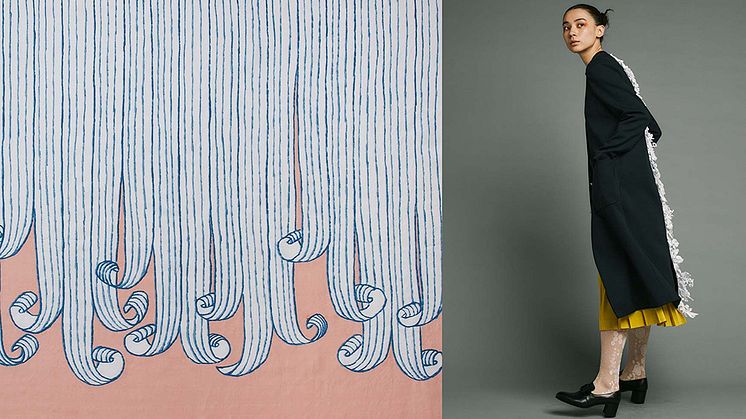
Press release -
Japanese design by Akira Minagawa stars in a new exhibition in Stockholm, opening February 22
The Nationalmuseum in Stockholm invites visitors to explore the design philosophy of the Japanese designer Akira Minagawa in the exhibition Design = Memory. Akira Minagawa & Minä perhonen. Textiles, fashion, design objects, as well as original artworks are all in a circular dialogue showcasing the creative process. The exhibition also reminds us how the Nordic countries and Nordic design have always played a key role for Akira Minagawa.
Nationalmuseum houses collections of fine art and design from six centuries including contemporary applied art and design. Yearly, putting on temporary exhibitions bridging objects in the collections, the time has come to introduce the design world of Akira Minagawa in a broader sense in Sweden.
Minagawa is one of the most prominent Japanese designers and the founder and lead designer of fashion and textile brand Minä perhonen. Minä means I in Finnish, and perhonen means butterfly.
The company started in 1995 as a one-man operation but grew gradually into the team of 200.The sphere of Minä perhonen’s creative activities has expanded from fashion to home décor, tableware, and eventually, to all aspects of daily life.
“Design creates emotion. Emotions become memories. From memories come ideas, ideas return to design – I believe that design and memory are in a single cycle, and that each is the same energy in a different state.”
This is how Akira Minagawa describes the core idea, the circular flow, related to the exhibition.
The exhibition will explore Akira Minagawa’s and minä perhonen’s design philosophy from the first ideas to the final products and even beyond: the experiences and memories of the users of the garments and design objects play an important role. Akira Minagawa likes to discuss together with his team how design can – and should – increase happiness in our daily lives. Good designs also ages with grace.
During public opening hours, the first days of the exhibition, Minagawa himself will even create a wall painting in the exhibition space.
Minä perhonen has a long track record of international design collaborations with companies such as Artek, Kvadrat Iittala and Klippan, as examples. The latest collaboration is shown for the first time in this exhibition. Swedish designer Ingegerd Råman, specialized in materials like glass and ceramics, has designed her first Minä perhonen textiles.
Curator: Susanna Pettersson, PhD
Exhibition dates: 22 February – 18 August 2024
Categories
Nationalmuseum is Sweden’s museum of art and design. The collections comprise some 700 000 objects, including paintings, sculpture, drawings and graphic art from the 16th century up to the beginning of the 20th century and the collection of applied art and design up to the present day. Nationalmuseum is a government authority with a mandate to preserve cultural heritage and promote art, interest in art and knowledge of art.

